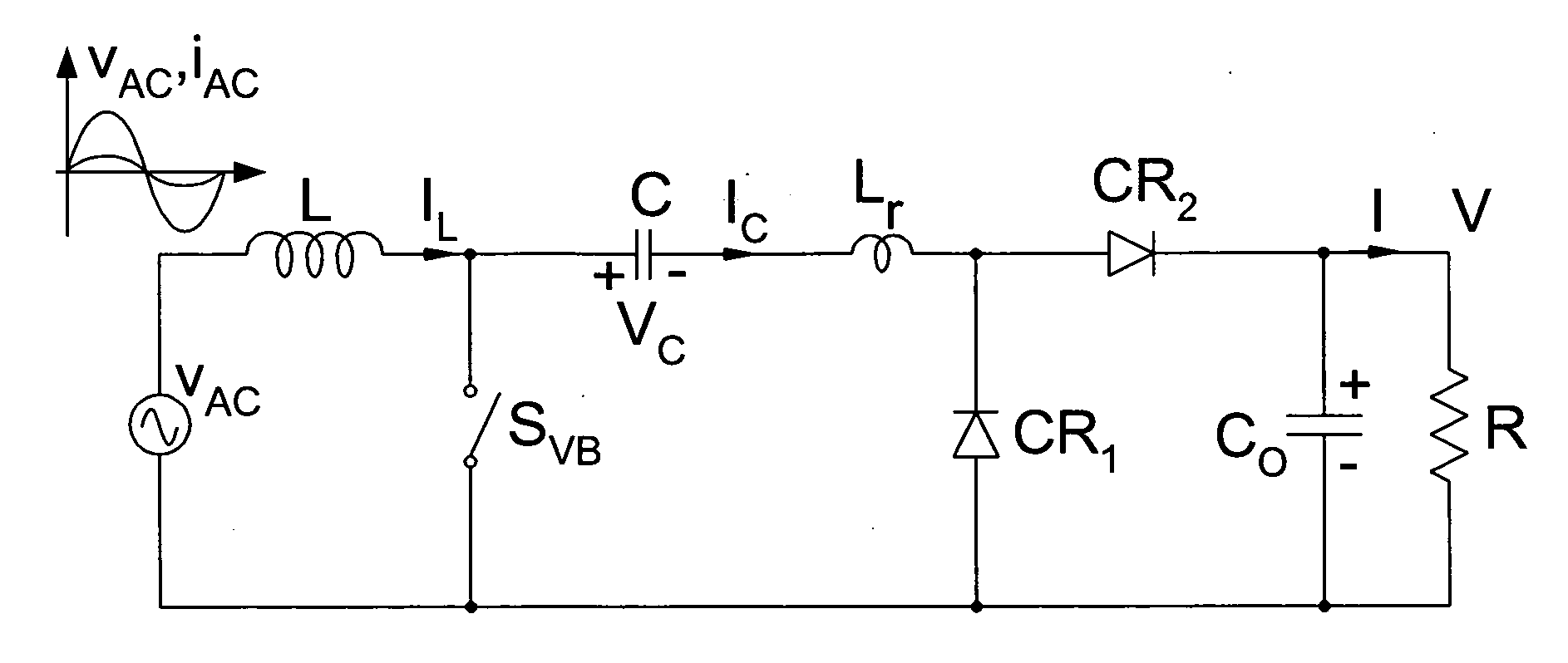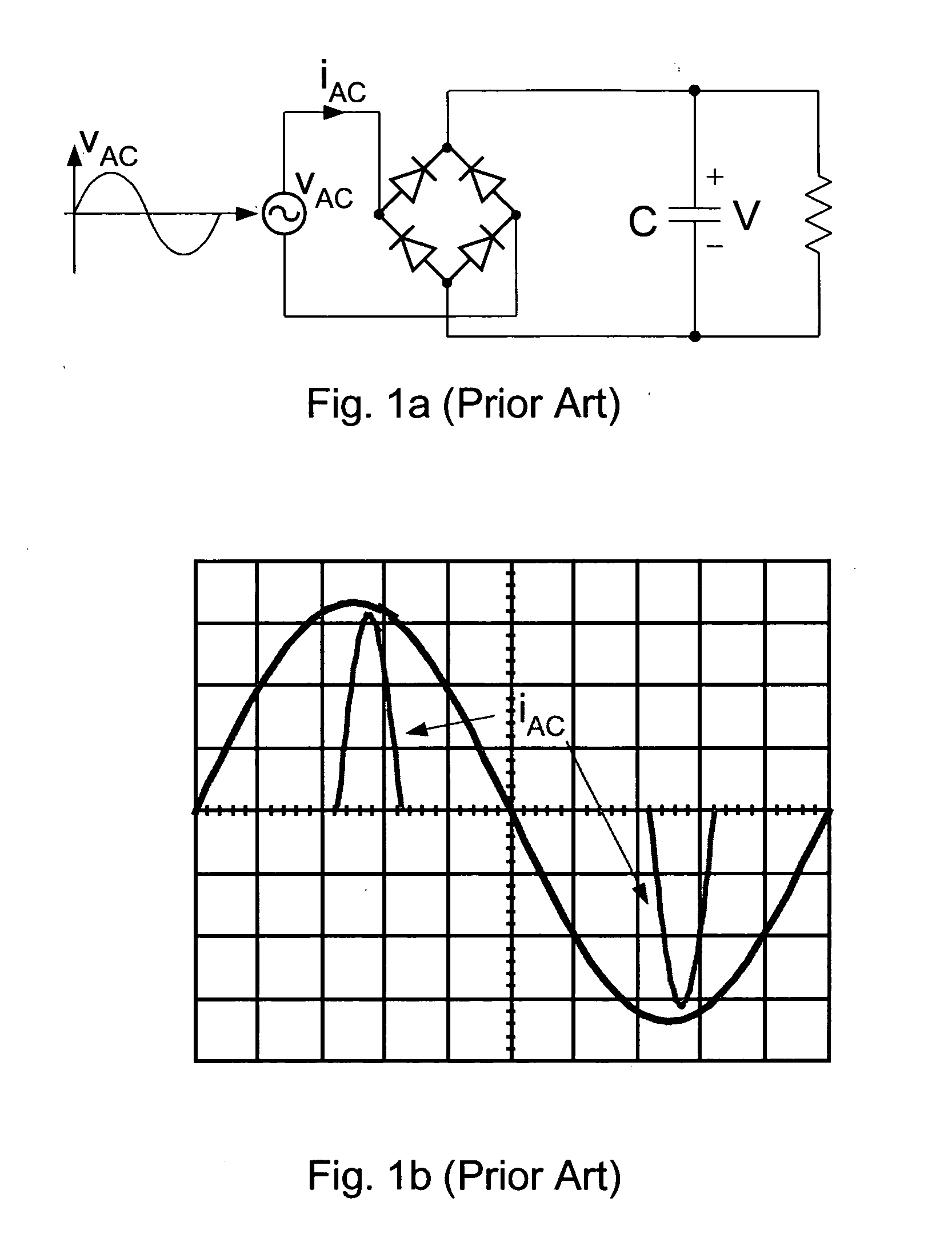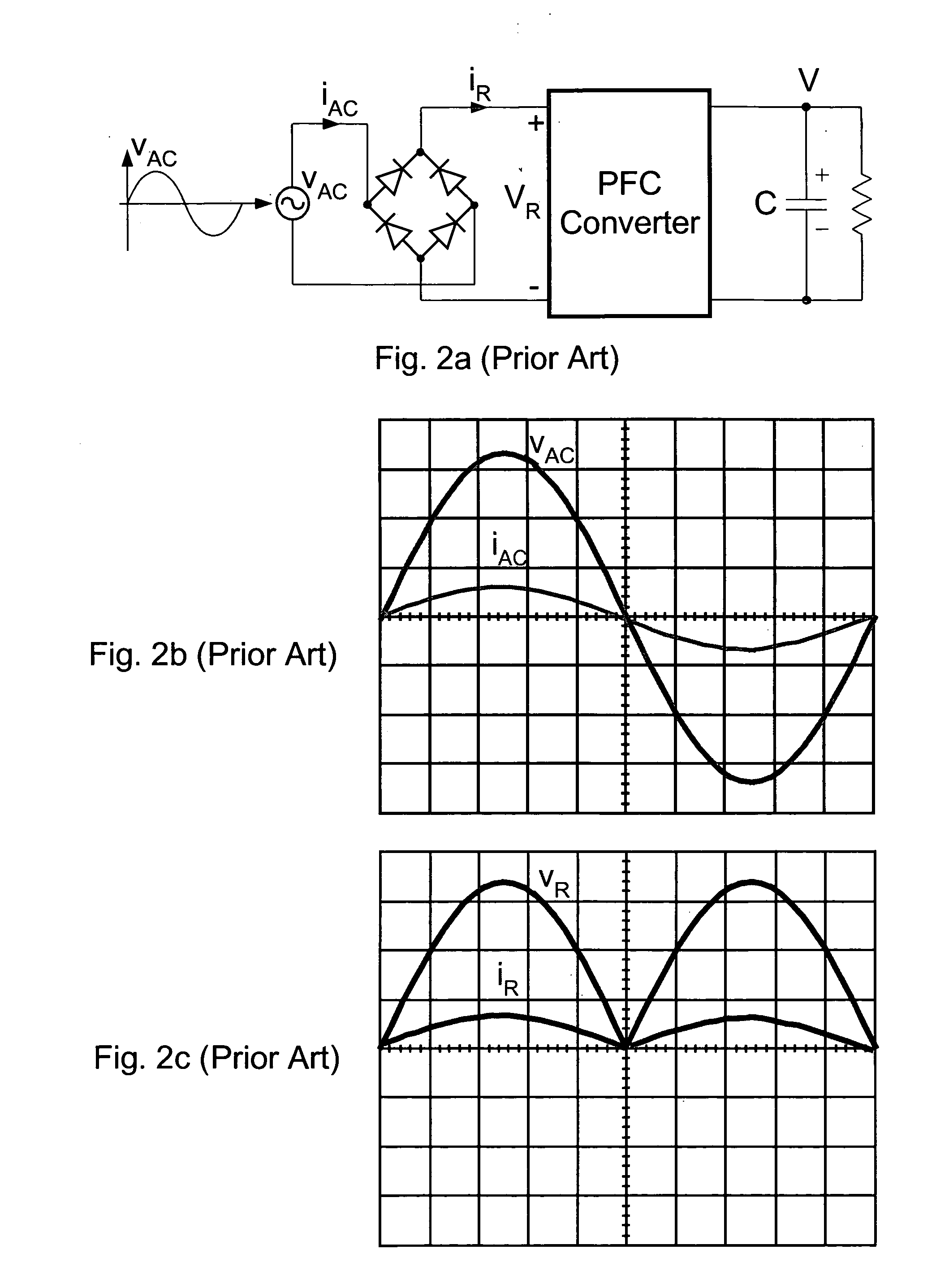Bridgeless PFC converter
a converter and bridge technology, applied in the direction of power conversion systems, electric variable regulation, instruments, etc., can solve the problems of 3% additional losses, 6% total conversion losses, and the converter is not capable of accepting alternating input voltages
- Summary
- Abstract
- Description
- Claims
- Application Information
AI Technical Summary
Benefits of technology
Problems solved by technology
Method used
Image
Examples
experimental verifications
[0059]The Bridgeless PFC converter is verified by on an experimental 400W prototype, which converts 110V AC line voltage into a 400V DC output voltage. FIG. 18a shows the line voltage (top trace) and AC line current (bottom trace). The Power Factor was measured at 300 W load to be 0.997.
[0060]Very high efficiency of over 97% was measured over the wide input AC voltage range. In particular, note the very high efficiency at the low AC line voltage of 85VAC as shown in FIG. 19a while the power losses are shown in FIG. 19b. This clearly indicates the absence of the bridge rectifier on the front. The prior-art PFC converters have a significant efficiency drop at the low 85V AC line due to the two-diode voltage drops. This is clearly one of the key advantages of the new Bridgeless PFC converter.
PUM
 Login to View More
Login to View More Abstract
Description
Claims
Application Information
 Login to View More
Login to View More - R&D
- Intellectual Property
- Life Sciences
- Materials
- Tech Scout
- Unparalleled Data Quality
- Higher Quality Content
- 60% Fewer Hallucinations
Browse by: Latest US Patents, China's latest patents, Technical Efficacy Thesaurus, Application Domain, Technology Topic, Popular Technical Reports.
© 2025 PatSnap. All rights reserved.Legal|Privacy policy|Modern Slavery Act Transparency Statement|Sitemap|About US| Contact US: help@patsnap.com



